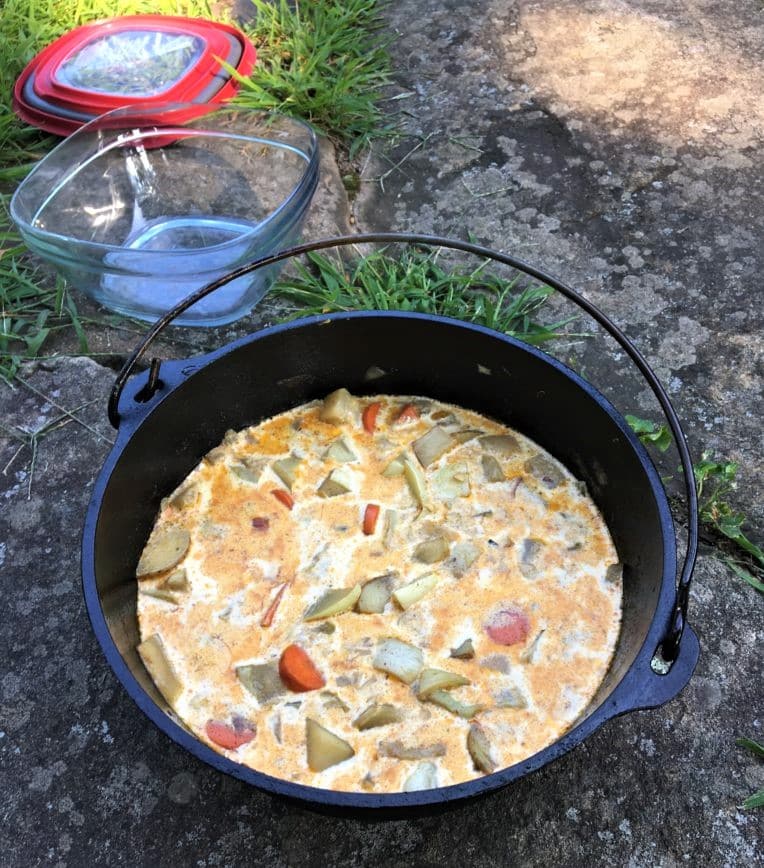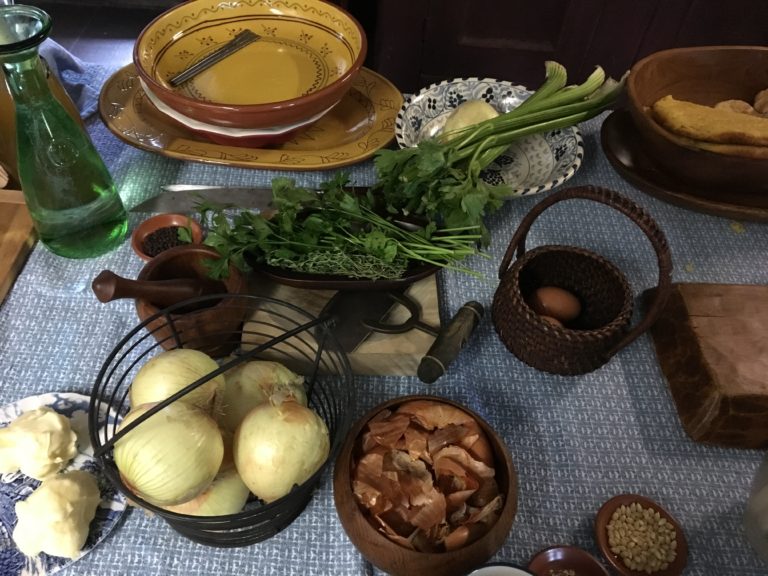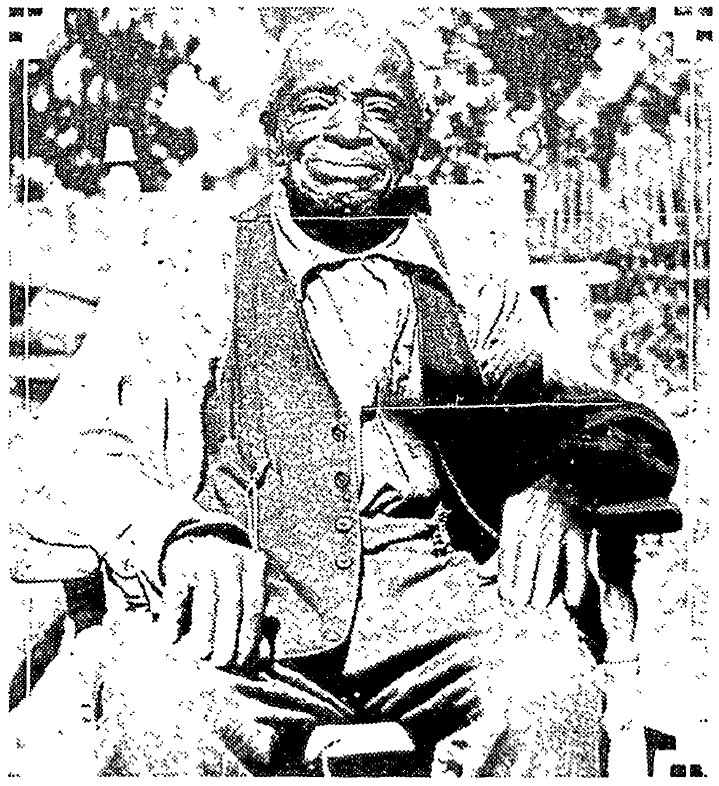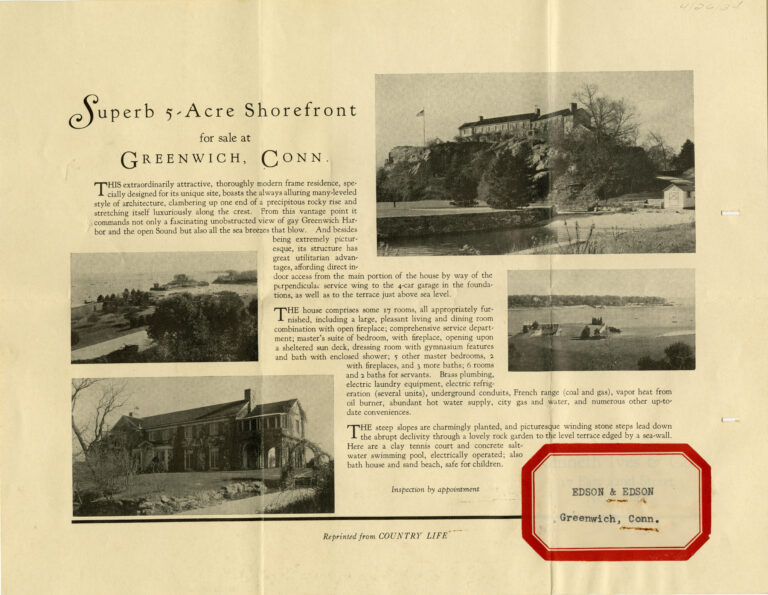The hearth was the heart of a colonial home. It provided people with warmth, light, and most importantly, food. Almost everything a colonial family ate would have been prepared on the hearth. In this mini-series, I am going to show you how I make some of my hearth cooking staples.
Please note that not all fireplaces, even in colonial buildings, are equipped to be a cooking hearth. I am also a professional with years of training. Please do not try this at home.
Today’s recipe is one that can be replicated on a campfire or stove-top. If you would like to give it a try, please make sure that campfires are safely constructed, ovens are used with care, and a responsible adult is present at all times.
Today’s Recipe: Pattypan Soup
Have you ever seen a squash like this in a grocery store or garden?
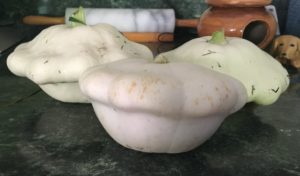
They’re weird, right? They look like little ghosts or UFOs. Can you even eat them? The answer is yes, you can!
Pattypan squash is an heirloom vegetable. Native Americans grew it for hundreds of years before the first European settlers appeared. Early colonists were quick to adopt the squash and share it with their relatives back in Europe, where it began to appear in cookbooks in the 1700s.
If you would like to grow pattypan squash from seed, it is a perfect plant for beginners. Once planted, the plants grow independently and quickly. Pattypan is usually white but also comes in green and yellow. It does not change color to show when it is ready to be picked. Instead, harvest pattypan when it has grown 3 to 5 inches in diameter. Any bigger and it starts tasting woody.
Ingredients
- 3 or 4 Pattypans
- Other fresh vegetables, such as:
- Onions
- Carrots
- Potatoes
- Peas
- Spices, such as:
- Salt
- Pepper
- Garlic
- Cayenne
- Coriander
- Turmeric
- Mustard
- Cinnamon
- Oil or butter, for caramelizing the onions
- Vegetable broth
- Cream
Directions
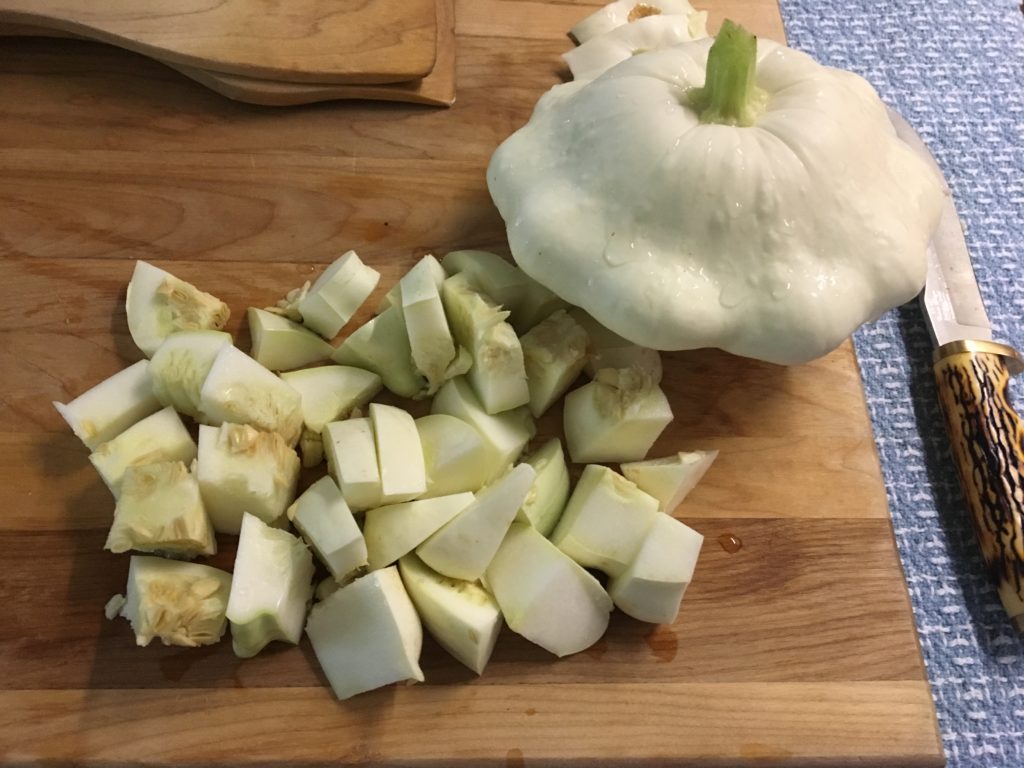
Step 1
Cut up the vegetables into rough chunks.
Step 2
Pre-cook the onions first using a little oil or butter. It’s important to cook the onions first, as they take around 20 minutes to caramelize.
Step 3
Once the onions reach a sweet, browned state, add the rest of the vegetables.
Step 4
Next, I add spices.
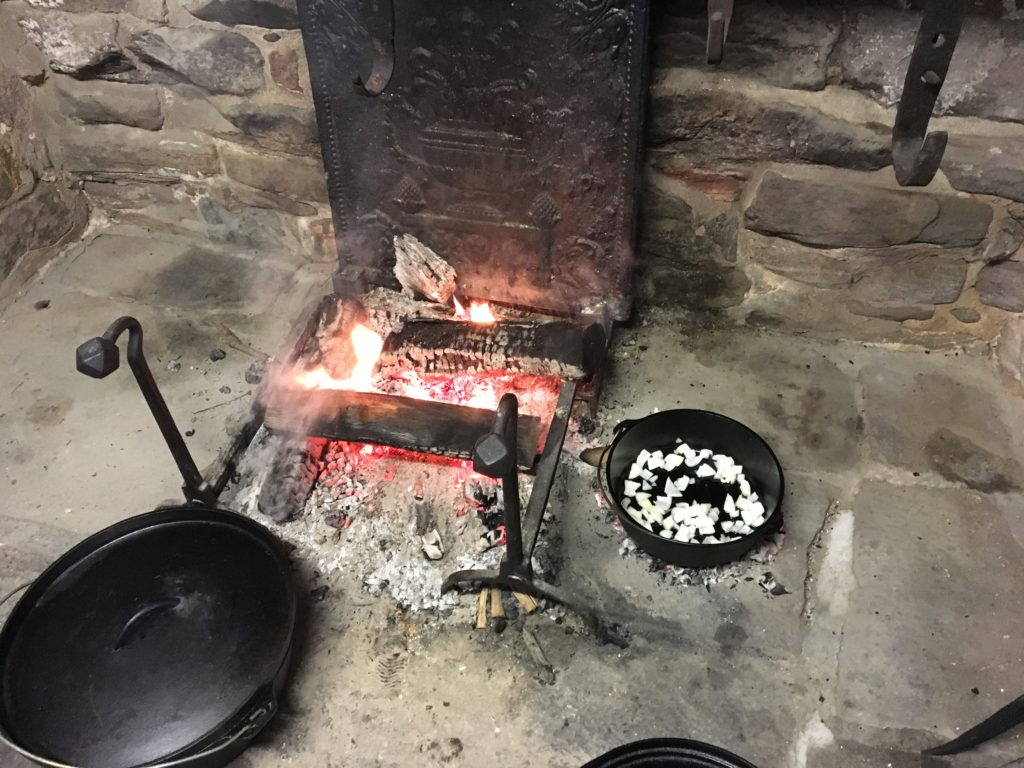
Contrary to popular belief, using spice was a normal part of colonial cooking. The spice trade was well established by the mid-1700s. Colonial cooks commonly spiced their food with pepper, nutmeg, mace, and ginger as well as dozens of other spices. My recipe uses garlic, salt, cayenne, coriander, turmeric, mustard, and cinnamon.
Add to taste!
Step 5
Once the spices have browned, I add a few glugs of white wine and vegetable broth. Then I let it cook until a knife slides in easily through the root vegetables. Be careful not to cook too long, or else the squash will start to come apart.
Step 6
When everything is ready, add a cup of cream and, if needed, more salt.
Enjoy!
